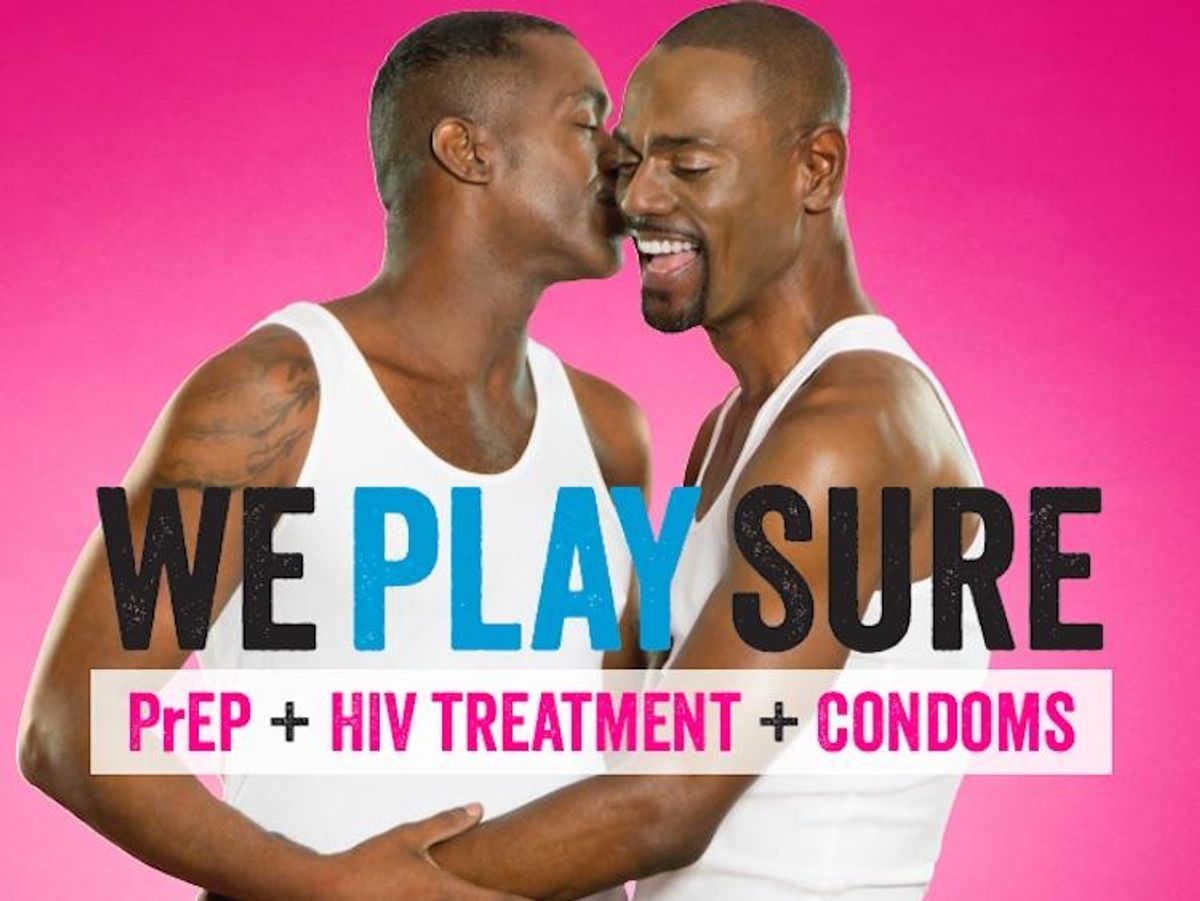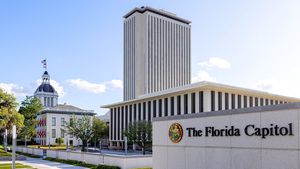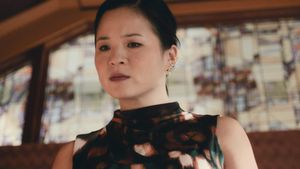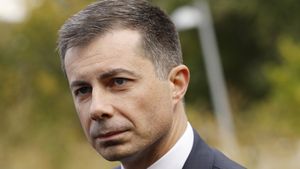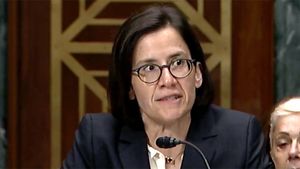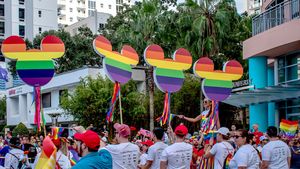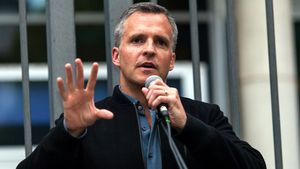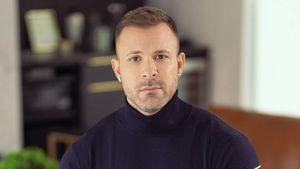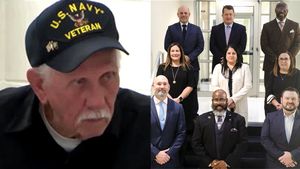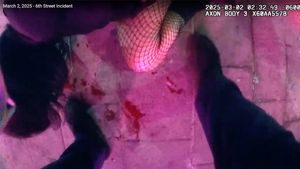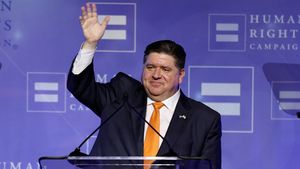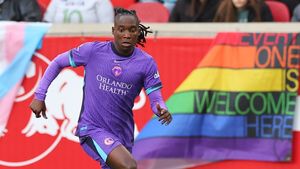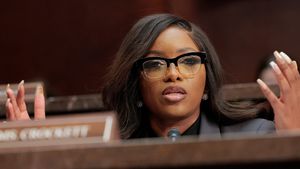Last Thursday night, the New York City Health Department held a special kiki at the cheekily named bar C'Mon Everybody, at the intersection of the Clinton Hill and Bedford Stuyvesant neighborhoods of Brooklyn, which have traditionally been majority black but with the ever-looming presence of gentrification have become pretty gay over the last few years.
I eschewed my usual Thursday evening plans of hunkering down, chainsmoking blunts, and watching TV till I passed out on the couch to join 100 or so other queens of color to discuss the crisis facing our community.
In February, the CDC released a study that predicted, at current rates, that one in two black men who have sex with men (MSM) will be diagnosed with HIV in their lifetime. It was an alarming statistic, but that was the point--to ring the alarm, to bring some urgency to the still very real threat of HIV/AIDS. Between 2005 and 2014, HIV infections rose 87% among young black queer men, aged 13 to 24.
Related | The Miseducation of the Young Black Gay Man
Though PrEP (pre-exposure prophylaxis, a once-a-day pill, usually Truvada, that helps prevent the transmission of HIV) is revolutionizing the way we perceive and talk about HIV, the most vulnerable populations--namely, MSM and trans women of color--are the ones least likely to be taking it.
According to the CDC, 1.2 million people should be taking PrEP, including one in four gay and bisexual men--something like 492,000 of those million-plus people. However, much like Frasier and Gwyneth Paltrow, PrEP's audience is predominately white. Over 80% have PrEP paid through private insurance, while 80% of people on PrEP are white gay men.
The reasons more queer people of color aren't taking PrEP is due to both lack of awareness about the drug and a lack of insurance. But there's also an added degree of stigma. Out of 544 black MSM surveyed in a study published in the February 2015 edition of the American Journal of Public Health, 29 percent reported experiencing racial and sexual orientation stigma from heath care providers, while 48 percent reported mistrust of medical establishments.
So with these factors in mind, the NYC Health Department invited black and Latino MSM from around the city to C'Mon Everybody. I heard about it the way I get all my hard news: a pop-up on Grindr.
Hostess Harmonica Sunbeam--a vision in head-to-toe cerulean and serving you "It's Not Right but It's Okay" Whitney in both face and hair--got the program started and kept the ball and the queens rolling throughout the night. We broke into groups where reps from the Health Department led discussions on how to better address the health needs of our community.
The main problem it seemed, at least concerning Brooklyn, was a dearth of convenient facilities where black MSM felt safe and comfortable getting tested. Often, facilities in and around the neighborhoods where C'Mon Everybody comes on everybody are underfunded and understaffed, with random hours (like 9am-1pm). That, and fears over confidentiality lead folks to either go to Manhattan or simply not go at all.
When we reconvened as one big hunty family to go over our responses, another debate arose entirely. This one also concerning stigma, but stigma within our own little community. From the moment PrEP hit the market, opponents of the drug have warned that it would create more problems than it solved, essentially giving gay men carte blanche to do away with condoms and fuck bareback. For those who lived through the AIDS crisis, PrEP seemed less like a miracle drug than a slap in the face.
Related | Intergenerational AIDS Activists Endorse PrEP, Call Out Gilead
With the rise of the so-called "Truvada whore," as well as a recent dramatic increase in syphilis infections, those fears became reality, and some in attendance voiced those concerns. Still, others were wary of "slut-shaming" and excluding PrEP as a form of safe(r) sex. It was exciting, really, to witness this debate because it reminded me of the variations in, and diversity of, not only our collective queerness, but our collective blackness as well. Here was a room of people ostensibly like me, but all in different shades and with different ways of identifying--whether gay, or bi, or same-gender loving, or trans, etc--and we were all here for the same purpose.
So how do we address HIV among queer people of color? For the government, that means throwing more money at inner city clinics so they can better serve the community. And it also means doing a better job at informing the community about testing, about PrEP, about PEP, about treatment as prevention--not for nothing, a Grindr or Jack'd or SCRUFF pop-up ad is a highly effective way to grab attention. The only things those apps are good for are disseminating information and promoting divas' album releases anyway.
For the community itself, we all need to do a better job at being informed and protecting ourselves, because ultimately the onus is on us. Even as someone who writes and is informed about PrEP, I'm still confused as to how to get on it. Well, I was on it for a while, then my insurance changed, and suddenly it was super expensive so I stopped taking it. I had heard about Gilead's co-pay program but after jumping through a number of hoops with my insurance people--and taking into consideration that I have sex about once a year at best--it didn't seem worth the time to figure it out.
Still, for those interested in learning about getting tested and about PrEP and paying for it, there are a number of resources:
Where to get tested
Where to get tested in NYC
What is PrEP?
NYC DoH on PrEP
Truvada Cost Assistance
On the train ride home, with my NYC Health Department safer sex kit in tow, I was joined by the department's #PlaySure subway ads, promoting PrEP and condoms--but none featuring the couple at the top of this story, or any queer men of color for that matter. The irony, though bitter, was not lost.
